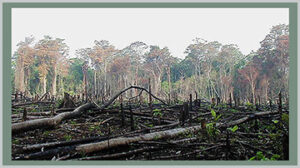Causes of Extinction
Habitat Loss; Overexploitation; Introduced Species; Global Pollution and Climate Change are all factors contributing to the extinction of species. Learn more about each of these and other causes of extinction.
HABITAT LOSS: The most common cause of endangerment is habitat loss. Plants and animals need space to live and energy provided by food, just as humans do. As human population and consumption increase, wildlife habitat is converted to houses and highways (continue)
INTRODUCED SPECIES: Humans often move species around, introducing species that are not native to an ecosystem and disrupting the delicate balance that evolved among species in that ecosystem. Species can be moved both accidentally and intentionally. The introduced (continue)
OVEREXPLOITATION: Humans also deplete wildlife populations by capturing or killing individuals for their own use. Animals are killed for food, fur, feathers, oil, medicines, crafts, and a host of other uses. They are also shot to stop them from killing livestock, or simply for (continue)
POLLUTION: One of the ways habitat is degraded is by pollution. Creatures that depend on either freshwater or saltwater for all or part of their life cycles, like fish, frogs, marine mammals, and many invertebrates, are especially vulnerable to pollution. Water is polluted by (continue)
OTHER FACTORS: We know less about other factors that probably contribute to the decline of biological diversity. We know little about how changes in our atmosphere, such as global warming or ozone depletion, is affecting other life forms. However it is becoming more apparent (continue)




